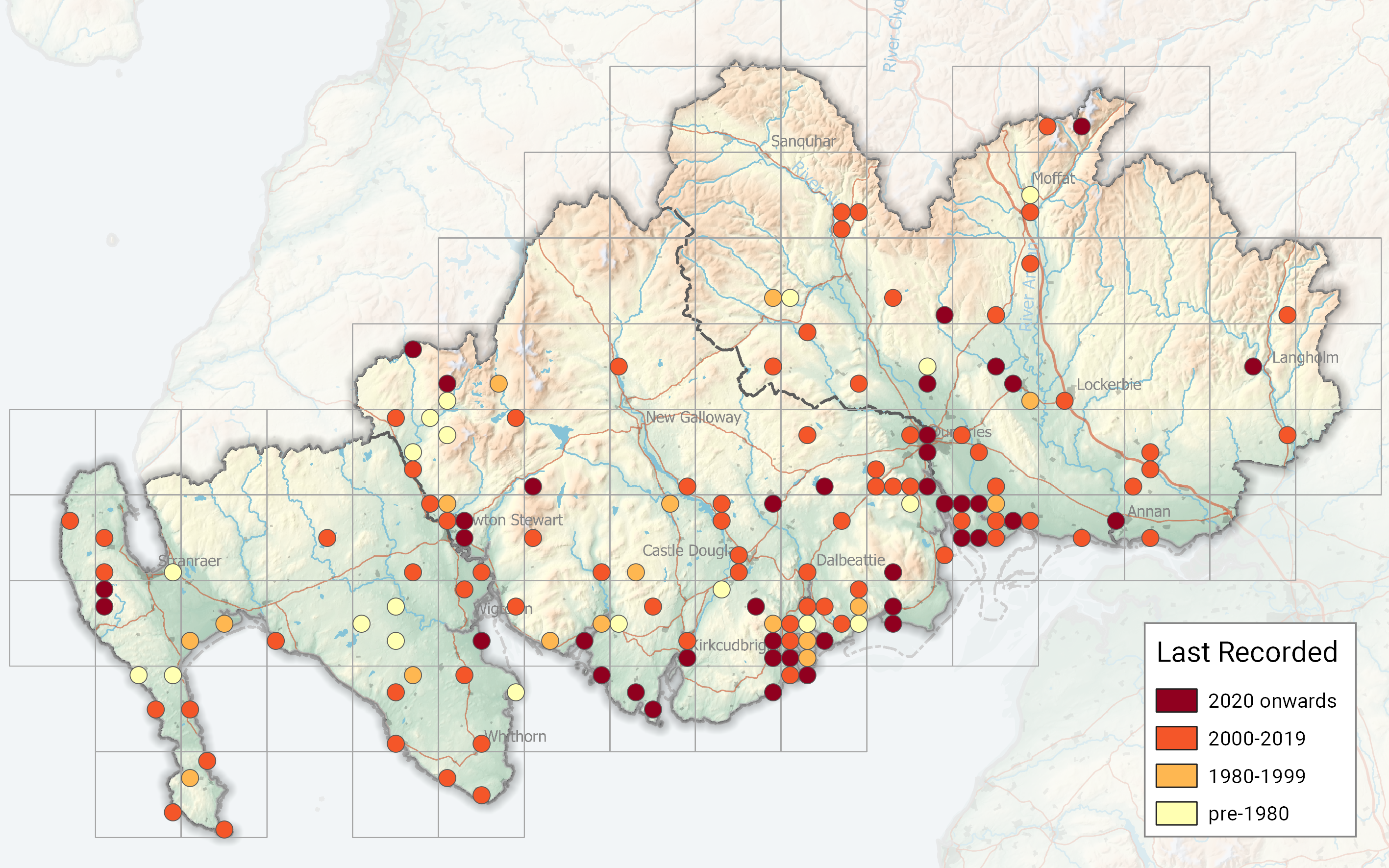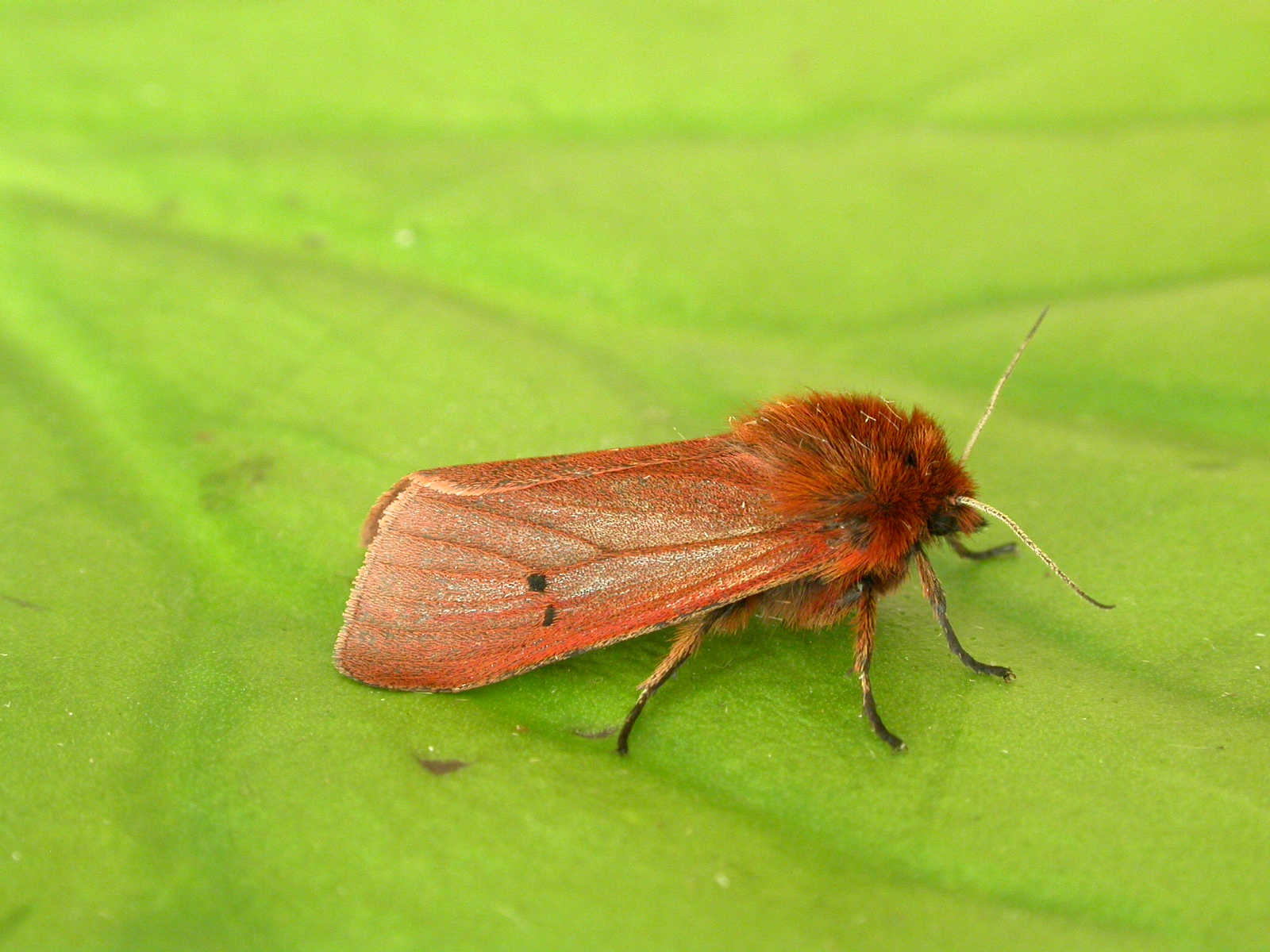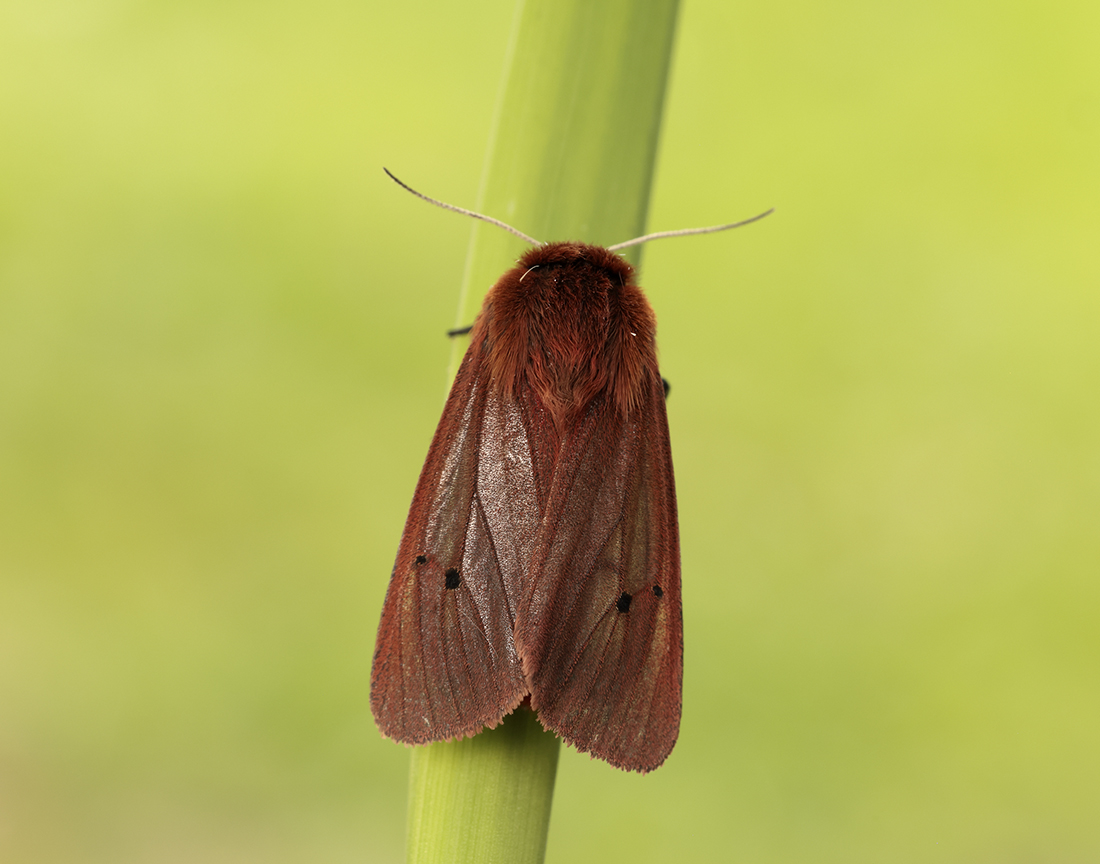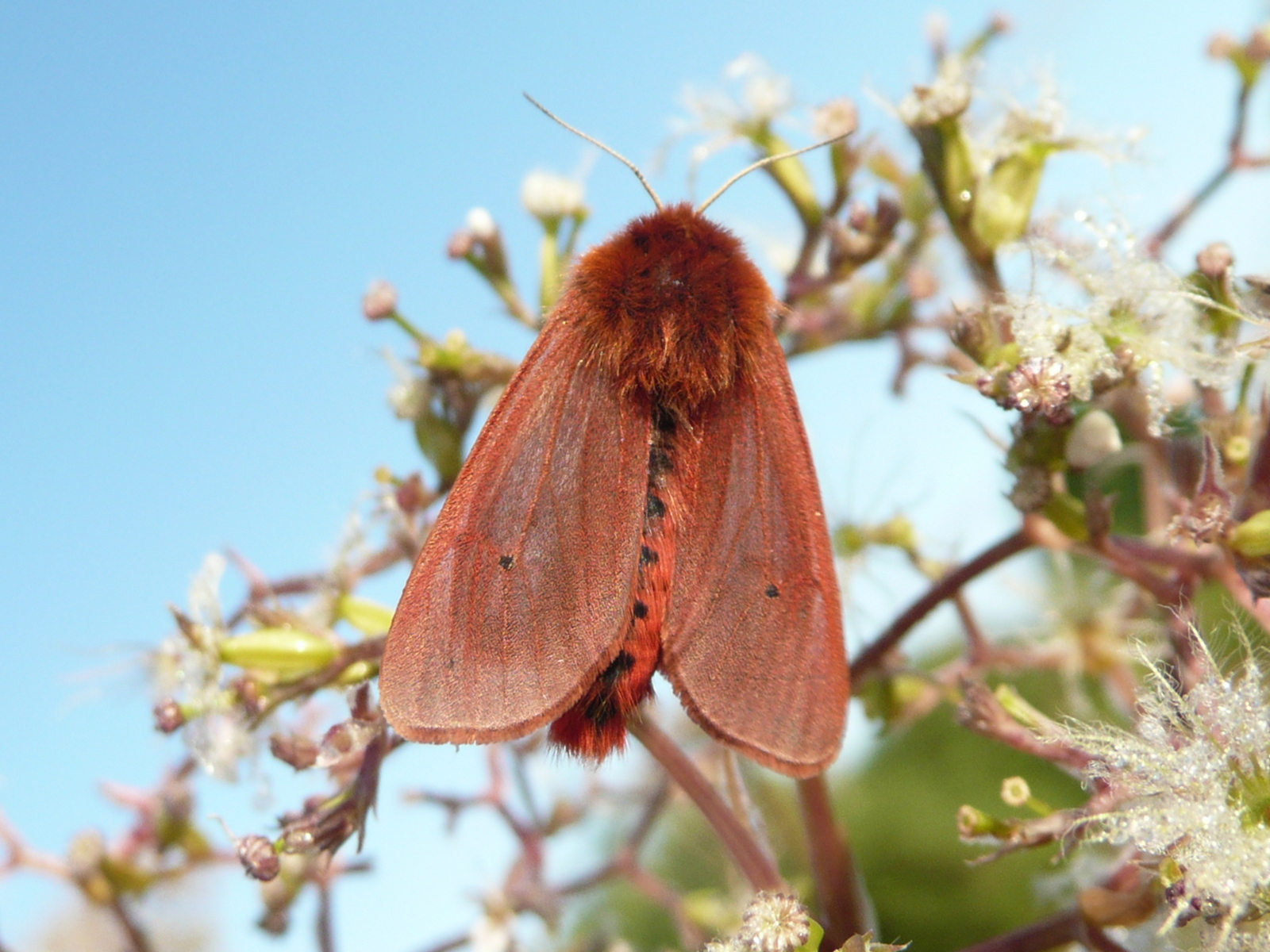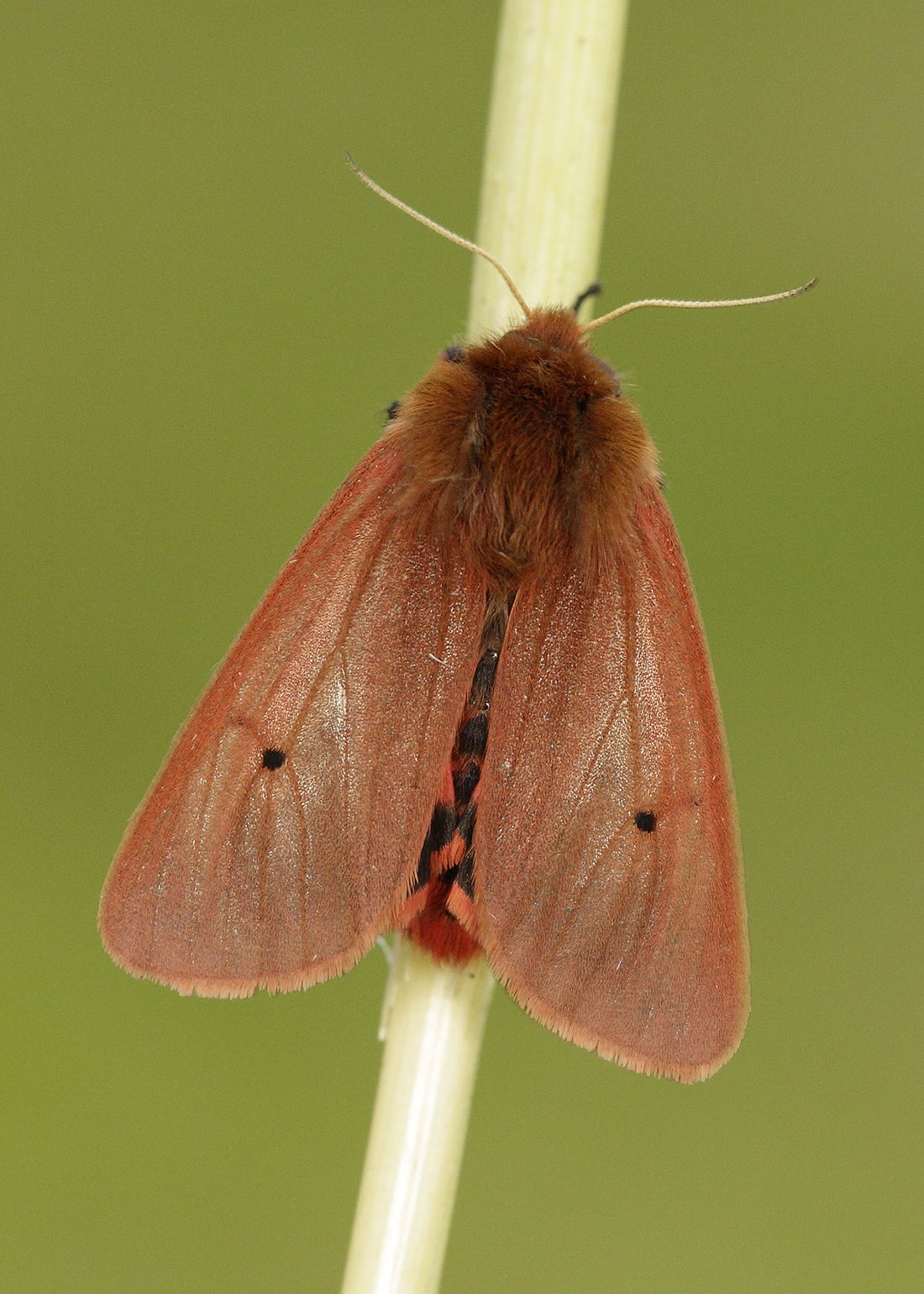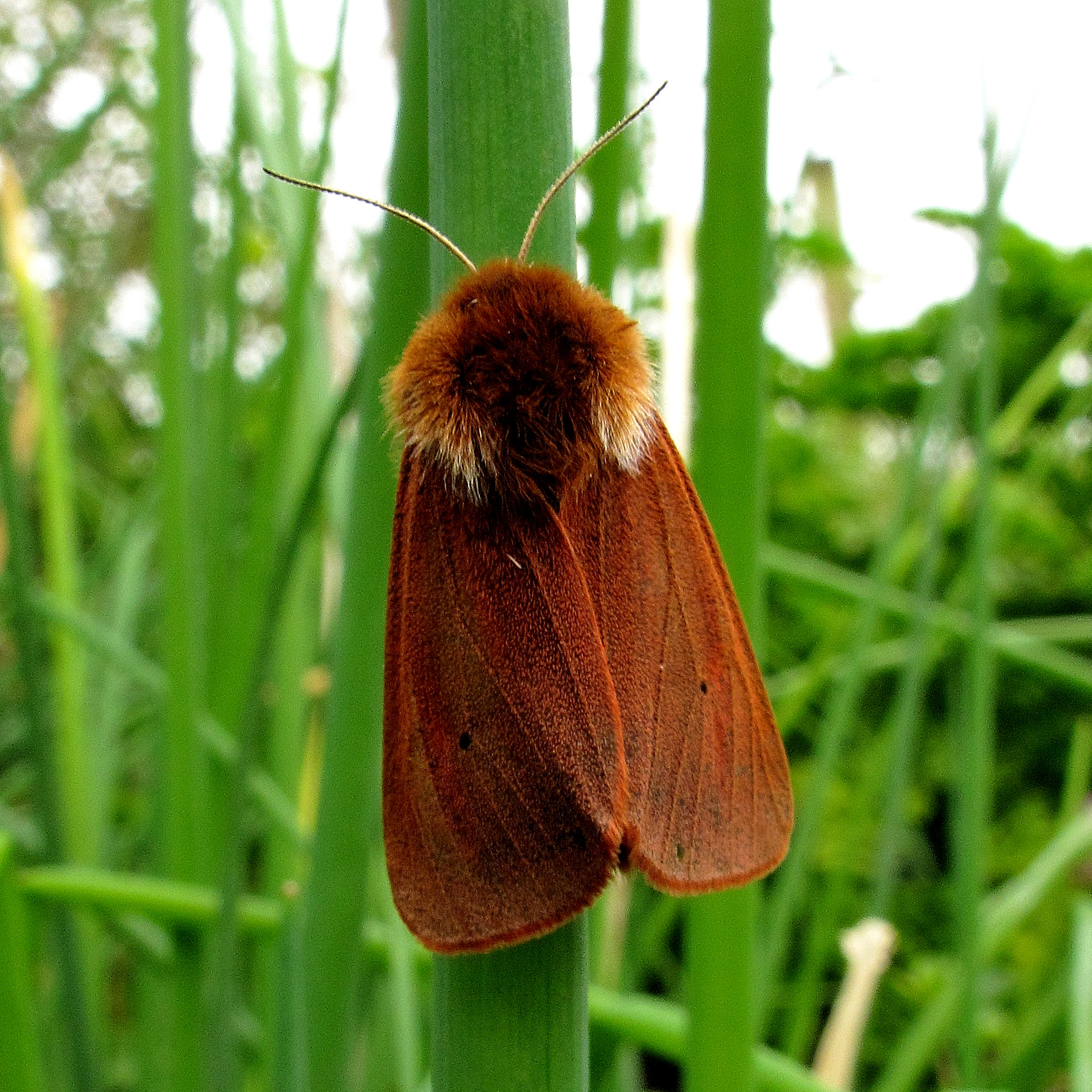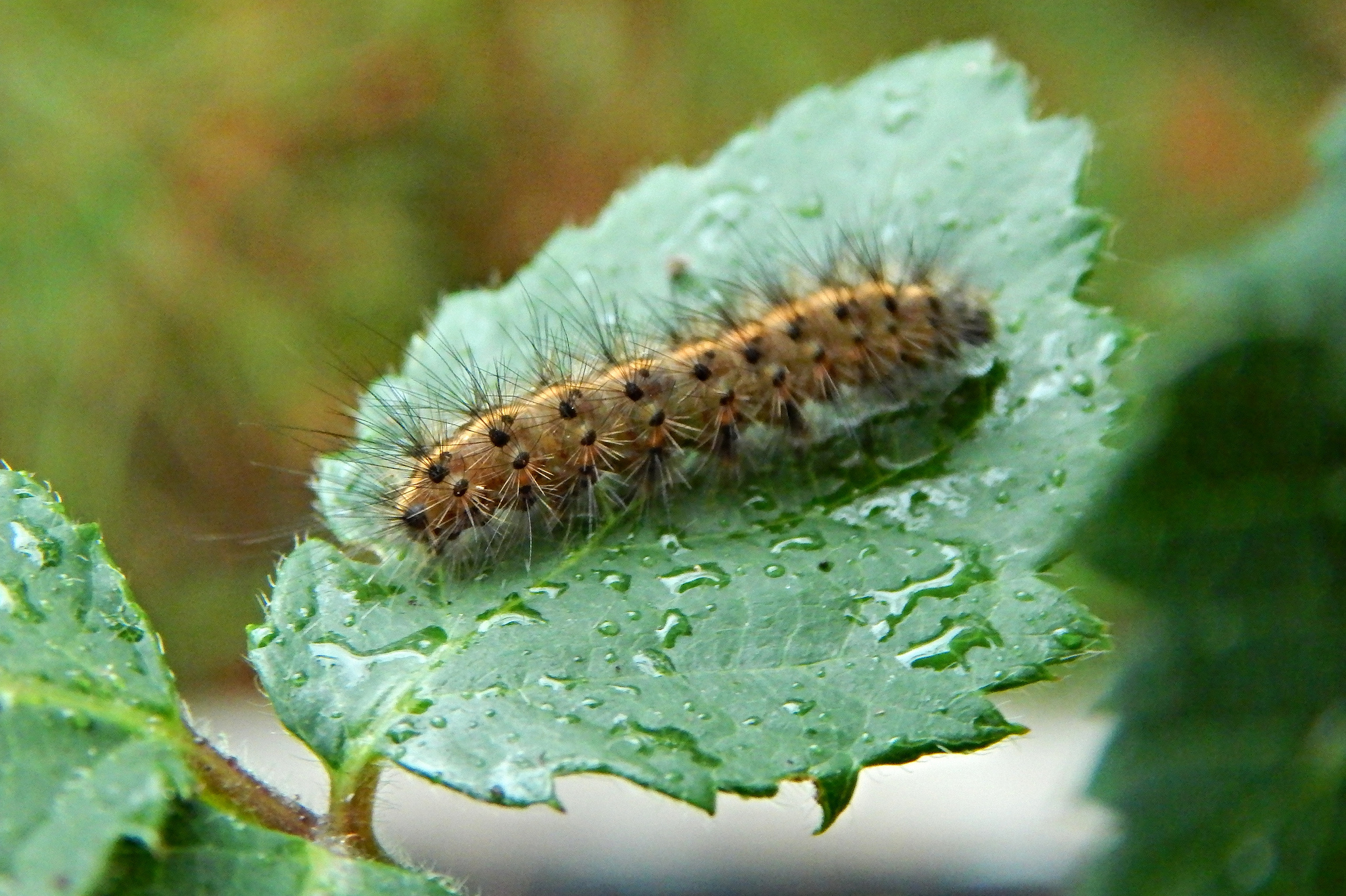Identification
Unmistakable. The race called Northern Ruby Tiger P. f. borealis (Staudinger, 1871) has the forewing of a darkened brown and a hindwing that is almost totally suffused with dark grey.
Recording Method.
Attracted to light.
Life cycle
Two overlapping generations. Overwinters as a fully groan larva during May to July, again, August to April.
Larval foodplants
Heathers, Broom, Spindle, ragworts and plantains.
Habitat
Open areas on moorland, heathland, woodland, gardens and sand-dunes.
History
Somerville (1858) had found larvae near Moffat (VC72) in August, 1858, this being our first notification of this dazzling crimson-coloured species of moth. Lennon (1863) had found it uncommon but had noted it at Whinney Hill (VC73). The next for Kirkcudbrightshire was at Orchardton (Robinson-Douglas 1874). Gordon (1913) had found it to be not uncommon and generally distributed in Wigtownshire. Larvae being found plentiful in September on various plants. Earliest date was 25th May 1897.
F. H. Day found it at Kippford in June, 1941. Sir Arthur Duncan (1909-84) during his lifetime had found it at Closeburn, Tynron and Castlehill, Dumfries (all VC72). During the early 1970s it was trapped regularly around the Glen Trool area, but there were just three singles from three Rothamsted stations, Bridge of Dee, Gatehouse of Fleet and Penninghame.
From 1979 to 2010 there were one hundred records from widely scattered sites across the region, with Carsegowan Moss (VC74) and Kirkton (VC72) featuring prominently.

